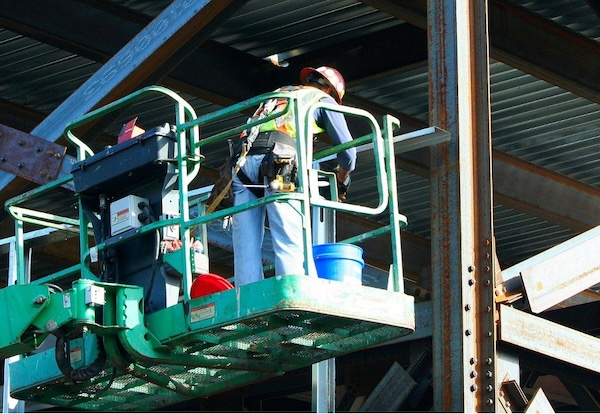How OSHA Certification Shapes Workplace Injury Liability for Employers and Workers

Understanding OSHA Certification and Its Legal Framework
OSHA certifications are formal training programs that meet the standards set by the Occupational Safety and Health Administration. They ensure workers and employers understand safety practices specific to the job roles and environments. OSHA does not certify individuals directly but sets the training guidelines authorized providers must follow.Training requirements vary by industry and role, but OSHA generally mandates instruction for jobs that pose significant risk, such as construction, warehousing, or chemical handling. These programs cover hazard recognition, prevention strategies, and proper equipment use. For example, forklift certification requirements are formal instruction, hands-on training, and a performance evaluation.
OSHA mandates that employers ensure employees complete this certification before they operate forklifts. In addition, reevaluation is necessary at least once every three years to confirm their continued ability to use the equipment safely. So, how does OSHA certification influence legal responsibility after a workplace injury?
Establishes Employer Compliance
OSHA holds employers legally accountable for providing safety training that aligns with federal standards. Thus, investigators check whether the employer met that obligation after a workplace injury. Certified training provides proof that workers received proper instruction on avoiding specific hazards.It also shows that the employer took steps to create a safe environment, which can limit exposure to fines or lawsuits. Without documentation of OSHA-compliant training, the employer may face heightened liability—even if the worker contributed to the incident.
Supports Legal Defenses
Employers who maintain OSHA-certified training records gain a stronger legal position when facing injury claims or regulatory investigations. These records prove the company followed federal safety rules and trained employees to avoid known hazards. If a trained worker gets injured, the employer can argue that the company fulfilled its duty of care. Courts and agencies often consider certified training a sign of due diligence, which may lead to reduced fines or a favorable legal outcome.Affects Injury Claim Outcomes
OSHA certification directly influences liability assessment in injury claims. If a worker completes required training and still gets injured, the investigation may focus on whether the employer enforced those safety standards. However, if a worker fails to follow the training, it may shift partial responsibility to them. Certification offers a clear reference point for determining what safety information was delivered, which shapes how insurance adjusters, regulators, or courts decide the outcome.Determines Regulatory Penalties
After a workplace injury, OSHA investigates whether the employer followed all applicable safety regulations. One of the key areas OSHA examines is whether the employer provided the required training under relevant standards.The agency may issue citations with elevated penalties if the investigation reveals that training was missing, incomplete, or poorly documented. These penalties vary depending on the severity of the violation and whether the regulators warned the employer before.
Certification helps show that the employer took preventive measures, which can reduce both the level of the violation and the fine. In addition to monetary penalties, OSHA may require the employer to implement new safety programs, submit to increased inspections, or make formal abatement commitments. These enforcement actions can affect how the company operates long after the incident.
Strengthens Worker Protections
OSHA-certified training prepares workers to identify hazards, follow safety procedures, and take action in dangerous situations. When employees understand their rights and responsibilities, they are more likely to act in ways that prevent injury and protect others.This training also supports workers who report safety violations. If a trained employee identifies a hazard and the employer fails to address it, certification reinforces the worker’s credibility in a legal or regulatory dispute.
Certified training strengthens whistleblower protections as well. Workers who complete required training and follow safety protocols are harder to discredit if they file complaints or claims. In legal proceedings, certification helps show that the employee acted in good faith and within the boundaries of their training.
Clarifies Contributory Negligence
Contributory negligence refers to the degree to which an injured worker may be responsible for their injury. OSHA-certified training helps establish how well the worker understands the safety procedures relevant to the task. If the employer can show that the employee received proper instruction and chose to ignore it, legal responsibility may shift partially to the worker. It can reduce the employer’s financial liability or affect the outcome of an insurance claim.On the other hand, if the employer did not provide the required training, the worker’s actions are less likely to be seen as negligent. As such, courts or regulators may hold the employer fully responsible for the injury. Certification creates a documented standard of what the worker should have known, which helps clarify how much fault, if any, they share.
Improves Insurability and Financial Standing
OSHA-certified training can significantly affect how insurers evaluate injury claims and set premiums. When employers maintain accurate training records, they show a commitment to safety that insurers view as a reduced risk. It can lead to lower insurance costs, smoother claim processing, and fewer disputes. If a trained employee follows proper procedures and still gets injured, the employer is more likely to receive full support during the claims process.In contrast, a lack of certified training may raise red flags. Insurers may question validity or delay approval while reviewing the employer’s safety practices. Some may even adjust premiums upward based on a pattern of noncompliance.
Conclusion
OSHA certification does more than fulfill a regulatory requirement. For instance, when training is complete and properly documented, it becomes part of a broader legal defense that reinforces accountability and preparedness. This foundation allows employers to respond more effectively during investigations and gives workers a clearer understanding of their protections. As both sides operate within defined safety standards, disputes become easier to resolve and less likely to escalate.Do You Need An Attorney?
If so, post a short summary of your legal needs to our site and let attorneys submit applications to fulfill those needs. No time wasted, no hassle, no confusion, no cost.

